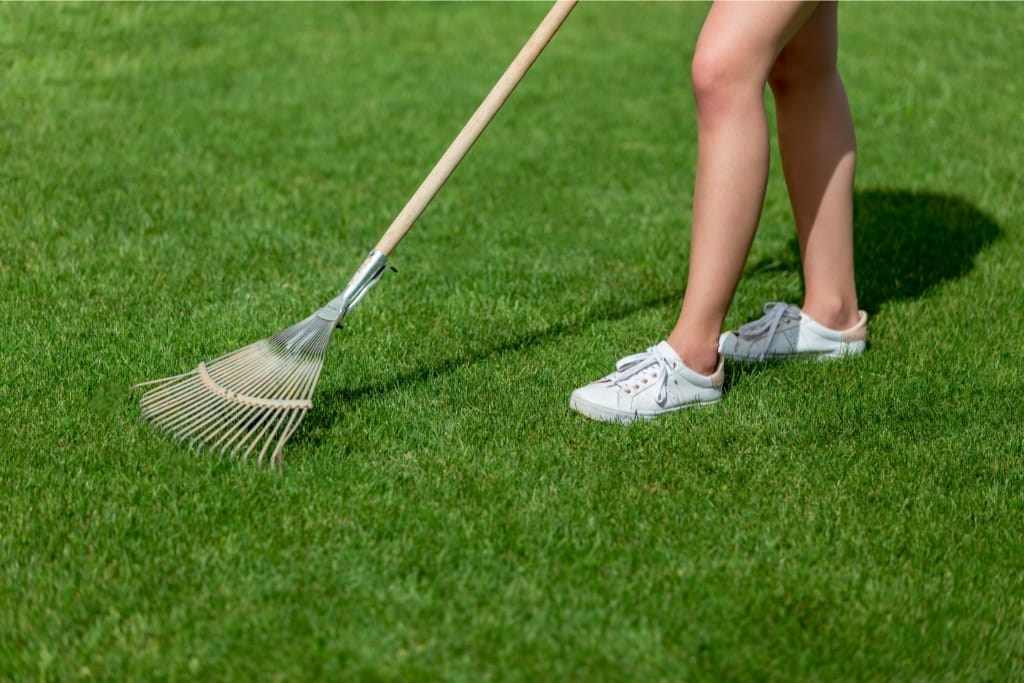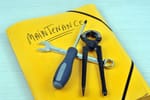Artificial grass is becoming an increasingly popular option for landscaping, and with its ease of maintenance, many homeowners are opting for it.
That being said, even artificial grass needs to be cleaned periodically to stay looking good and remain safe for family and pets.
In this article, we will cover five ways to clean artificial grass so that you can enjoy your outdoor space all year long.
Let's cover them...
1)) Regular Maintenance
The most important thing to do is keep up with regular maintenance.
Make sure you remove any debris such as leaves, sticks, or other objects that have fallen onto the grass.
This will help reduce the amount of dirt that accumulates over time and will prevent mold and mildew from forming on your artificial turf.
You should also brush and rake the turf regularly to help keep it looking neat and tidy.
List Of Artificial Grass Cleaning Tools:
- Artificial Grass Rakes
- Artificial Grass Sweepers
- Artificial Grass Rakes & Brooms
- Artificial Grass Brushes
- Artificial Grass Cleaners
2)) Spot Cleaning
If there are any stains or discolorations on your artificial turf, it’s important to use the right cleaning solutions in order to avoid damaging the material.
Mild detergents are usually safe for use on artificial turf but make sure you read the manufacturer’s instructions carefully before using any solution on your turf.
You can also use diluted bleach solutions (1 part bleach, 5 parts water) for tougher stains but make sure you rinse off any remaining bleach mixture thoroughly after cleaning so as not to damage your turf.
3)) Cleaners With Enzymes
For stubborn stains or odors, try using a cleaner with enzymes in it like Nature’s Miracle or Simple Solution Extreme Pet Stain & Odor Remover.
These solutions are designed specifically for pet-related messes, so they’ll be strong enough to tackle tough stains without damaging your synthetic lawn.
As always, make sure you test out the product in an inconspicuous area first before using it on a large area of grass!
4)) Pressure Washing
When all else fails, pressure washing is sometimes necessary for the deep cleaning of artificial turf.
Pressure washing should only be done if absolutely necessary since too much pressure could damage some types of synthetic grass fibers – consult your manufacturer's instructions prior to pressure washing your artificial lawn.
If you do decide that pressure washing is necessary, make sure you use only warm water and low-pressure settings (less than 2,000 psi).
5)) Vacuuming
Once you’ve finished dry brushing, the next step is vacuuming the artificial grass with a powerful shop vacuum cleaner equipped with a hose attachment.
This should be done once a month or more often if needed to remove any small pieces of debris such as leaves or twigs that may have accumulated on the surface of your turf over time.
Be sure to take extra care when vacuuming around any seams between two sections of turf as these are typically more vulnerable to damage.
Conclusion
Keeping up with regular maintenance is key when it comes to preserving the quality of your artificial grass over time.
Make sure you remove debris regularly and brush/rake the surface often so that dirt doesn't accumulate and cause discoloration or odor buildup over time.
If there are any stubborn stains or odors present, try using cleaners with enzymes in them or diluted bleach solutions (1 part bleach, 5 parts water).
But if all else fails, then pressure washing may be necessary – just make sure you check with the manufacturer first before doing so.
With these tips in mind, now you can enjoy a beautiful-looking lawn year-round without having to worry about upkeep!
Download Our Free E-book!







